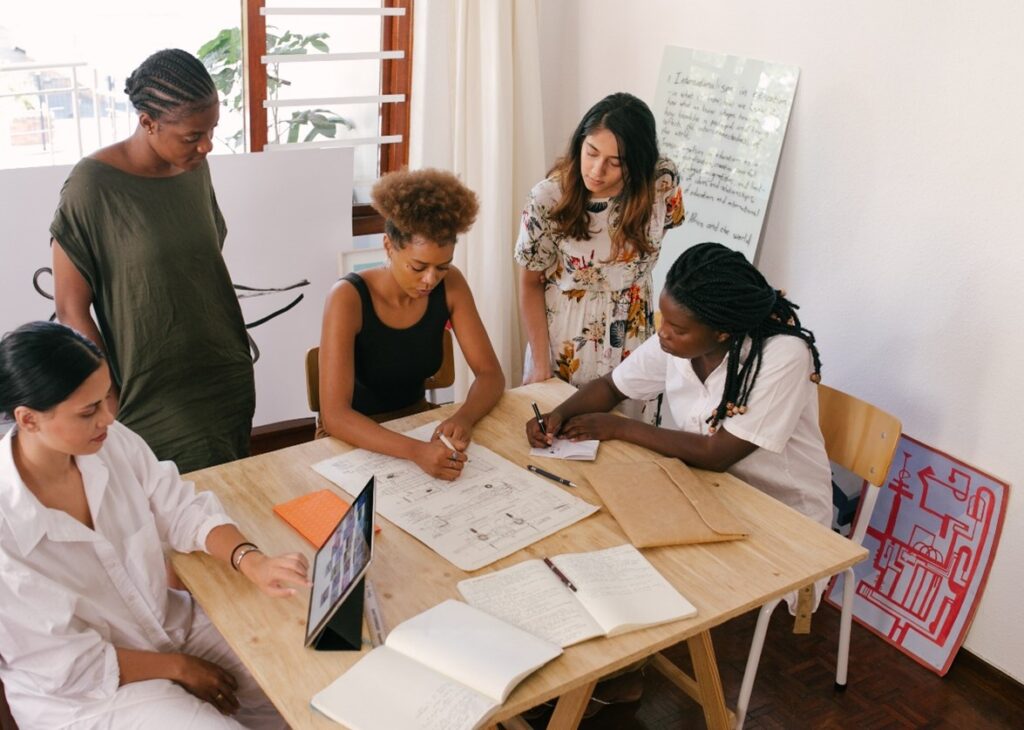There’s that magic moment that happens when people come together who are working on the same issue, but never realized they had company. Coming together with others who are working toward big, impactful, social change can feel like a breath of fresh air, an energy boost, a sense that anything you set your mind to is possible. Maybe this energy takes the group to another meeting, or a series of meetings, but before long, people aren’t showing up and the things you committed to at the last gathering never got done. The next time you try to get something going you hear a familiar story: “We tried that last time,” “I don’t have time for all talk and no action.” Collaboration is tricky and its success often hangs on being able to balance several factors including expectations, capacity, and competing timelines. So, how do you get a group past this hump? The answer is more an art than a science, but here are some of the tricks we use:
- Set an Expiration Date – When you get started, don’t invite folks to an ongoing, unending collaboration. Invite them to a time-limited exploration. Agree to a set of 3-4 meetings to see if anything is possible when this group works together. At the end of that period, you’ll decide if there’s a “there there,” if there is something greater for you to pursue collaboratively. This will motivate people to show up and take action to prove success. If the group decides to move forward, keep setting new deadlines for new goals, breaking out your work into small chunks.
- Build a Web, not a Wheel – Whether you meet virtually or in person, make time for people to build relationships with one another, not just the person gathering everyone. Each time you do set aside time to connect, you create another relationship that holds someone accountable. When other priorities outside of the collaboration come up, each group member will feel responsible for not just the organizer, but each participant because they have personal relationships. This will help the collaboration remain a priority, even when there are competing demands.
- Balance Talk and Action – There will be people in your group who need to talk and those who need action. Spend some of your time figuring out how the group will work together, how people can be part of the group, and how decisions get made. Without this, people will make assumptions and those assumptions can, and in our experience will, lead to disagreement. Also, consider spending time acting together—start small while you’re figuring out all the other parts. Celebrate the small stuff, because even when a group is just getting together to share information, collaboration creates ripple effects beyond just those sitting at the table.
- Redefine “Action” – Collaboration doesn’t have to mean that a group must create a totally new project or initiative. It can, but it can also be doing what you’re already doing in ways that benefit a bigger goal. It could be offering the same service or program but connecting with another partner to offer it in another language. It could be recognizing that you and another partner are doing similar things and agreeing to focus on the community group you serve best while providing referrals to one another. Collaborating can simply mean learning together about what works and what doesn’t. By redefining what “taking action” means in your collaborative space, you can establish clear expectations and respect folks’ varying capacities.
- Shift the Story – Agree as a group that you won’t use the words “always” or “never” when it comes to your history of collaboration. These words freeze you in time, which makes it hard to change the story. For example, try not to say things like, “They never show up,” or “We always end up doing all the work.” Recognize that folks hold different roles and positionalities and that everyone holds a different piece of the story.
At the end of the day, none of these tips are magic tricks, but they definitely help us maintain momentum. As you try these different tricks, give yourself grace, time, and space for ideas and patterns to emerge from the unique dynamics of your group. While many of us were required to do group projects in school, we weren’t always given the tools needed to do collaboration well. It takes practice and energy and, though it isn’t always easy, we know we can’t solve big, sticky problems alone. We all have a part to play together.


